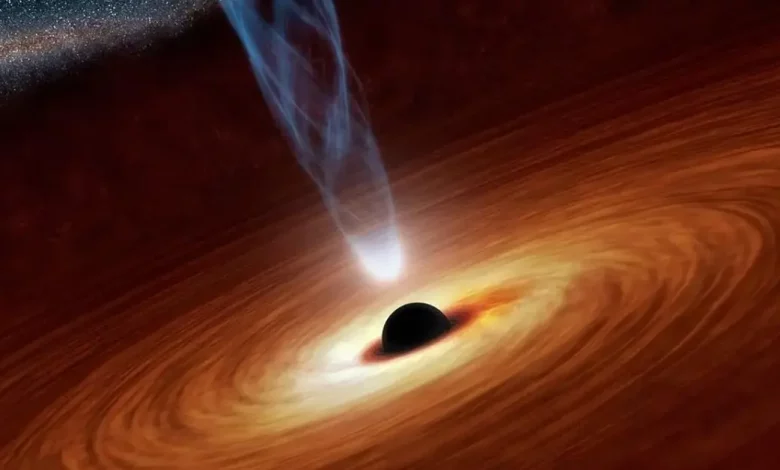
Context- Rotating black holes (a.k.a. Kerr black holes) have a unique feature that is a region outside their outer event horizon called the ergosphere.
What is a Black Hole?
- A black hole is an exceptionally dense item whose gravity is so robust that nothing, not even light, can escape it.
- A black hole does not have a surface, like a planet or star. Instead, it is a region of area where count has collapsed in on itself.
- This catastrophic collapse results in a large quantity of mass being concentrated in an exceedingly small area.
- Formation: A black hole is formd when a certainly huge star runs out of gas to fuse, blows up, leaving its core to implode below its weight to form a black hole.
- The center of a black hole is a gravitational singularity, a point wherein the overall concept of relativity breaks down, i.e. wherein its predictions don’t observe.
- A black hole’s great gravitational pull emerges as if from the singularity.
Rotating Black Hole
- A rotating black hole is also known as a Kerr black hole.
- There are two event horizons, the outer and the internal.
- The region of space in-between the two horizons is the ergosphere.
- Anything inside the ergosphere will be dragged by the black hole and rotate with it however it can still escape.
- However, whatever is inside the inner event horizon can by no means escape.
- Scientific Significance: We can extract rotational power from a rotating black hole.
- If something is sent inside of the ergosphere, and split it up into components, one goes inside the black hole while the alternative comes out.
- The part coming out may be made to have a far better pace, hence higher energy.
Note
- Known black holes fall into two instructions:
- Stellar mass: 5 to 10 of times the Sun’s mass;
- Supermassive: 100,000 to billions of instances the Sun’s mass;
- Middleweight black holes can also exist among those training, however none have been found to date.
- Spaghettification: As objects technique the event horizon of a black hole, they’re horizontally compressed and vertically stretched, like a noodle.
- Sagittarius A*: Sagittarius A* is greater than 25,000 light years from Earth – nearest supermassive black hole, with an expected mass millions of times that of Sun.
- Often abbreviated through researchers to Sgr A* (mentioned “Sagittarius A star”), it sits within the constellation of Sagittarius on the heart of the Milky Way.
Source: Indian Express





.png)



